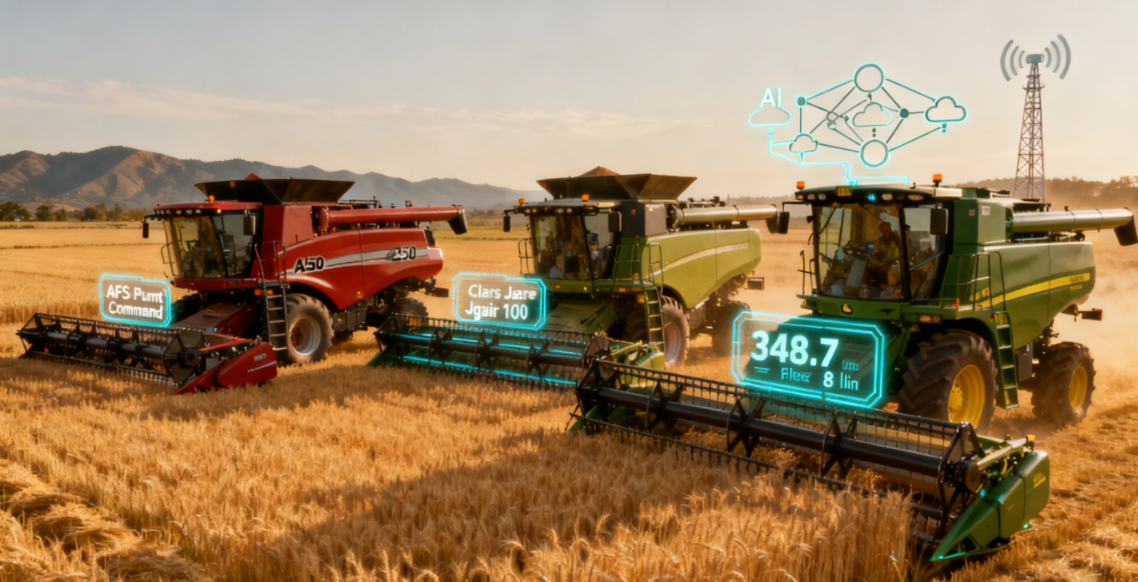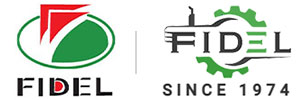Three Agricultural Machinery Giants Intensify Competition in Smart Harvesting Sector: CLAAS Sets Record, Case IH Launches New Products, John Deere Upgrades AI System

The global agricultural machinery market is witnessing a boom period for smart harvesting technology. Over the past 72 hours, three industry giants—CLAAS, John Deere, and Case IH—have successively announced major developments in the harvester sector. From efficiency breakthroughs to AI empowerment, their technological competition is redefining the paradigm of modern agricultural production.
Case IH Launches Axial-Flow 250 Series: Fully Automated System Adapts to Multi-Crop Harvesting
Case New Holland Global officially unveiled its new-generation Axial-Flow 250 series combine harvesters on October 23, with the AFS Harvest Command automated system as its core highlight. This system enables real-time linkage with all key components of the harvester, automatically adjusting rotor speed, fan power, and screen gaps based on crop moisture and density—all without operator intervention—while maintaining maximum productivity and grain quality. Notably, the model features a modular design compatible with harvesting multiple crops such as wheat, corn, and soybeans. Equipped with a large-capacity grain tank and a 63.4-liter-per-second unloading system, it can support over 8 hours of high-intensity operation and is expected to become a flagship model for the North American Great Plains and Eastern European grain-producing regions.
CLAAS Proves Strength with a Record: 348.7 Acres Harvested in 8 Hours Sets Benchmark
In a field test in Alberta, Canada, CLAAS equipment set a new record for harvesting efficiency. Local farmer Tate, operating a CLAAS machine equipped with the latest folding header, completed the harvesting of 348.7 acres (approximately 141.1 hectares) in 8 hours—representing a 46% increase compared to the 2018 record. Although the record-breaking equipment was a forage harvester, a CLAAS North America product director revealed that its core technology has been integrated into the Jaguar series silage harvesters. This series, equipped with a 24-liter V12 engine and a wide crop channel, can achieve a throughput of 500 tons per hour, sharing the same high-efficiency transmission system that underpinned the new record.
John Deere Upgrades AI Engine: Solving “Edge Cases” in Autonomous Harvesting
John Deere, meanwhile, has achieved a key breakthrough in smart technology. SparkAI, a company acquired by John Deere, disclosed on October 22 that the joint human-machine collaboration system developed by the two parties has completed field validation, capable of resolving extreme scenario issues for autonomous harvesters within 3 seconds. When harvesters encounter “edge cases” such as sensor obstruction by sand and dust or crop lodging, the system transmits real-time images to the cloud, generates decisions by combining human expert judgment and algorithmic analysis, and increases the success rate of field operations for the 8R series autonomous harvesters from 92% to 98%. Wes Robinson, John Deere’s Director of Strategy, stated that this technology will be prioritized for application in combine harvesters in the North American Corn Belt, with large-scale deployment expected by 2026.
Industry Analyst: Smart Competition Reshapes Market Landscape
“The moves of the three giants point in the same direction—using technology to offset production pressures caused by labor shortages and climate change,” noted Emily Carter, an analyst at the International Association of Agricultural Machinery. She added that Case IH’s automated adaptability, CLAAS’s efficiency optimization, and John Deere’s AI breakthroughs each address the core pain points of large-scale farmers. Data shows that the global smart harvester market size is expected to exceed 12 billion US dollars in 2025, representing an 18% year-on-year growth. Additionally, the price premium for models with real-time data processing capabilities has reached 30% compared to traditional equipment.
Post time: 10-23-2025




